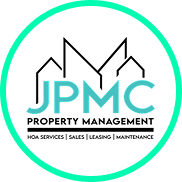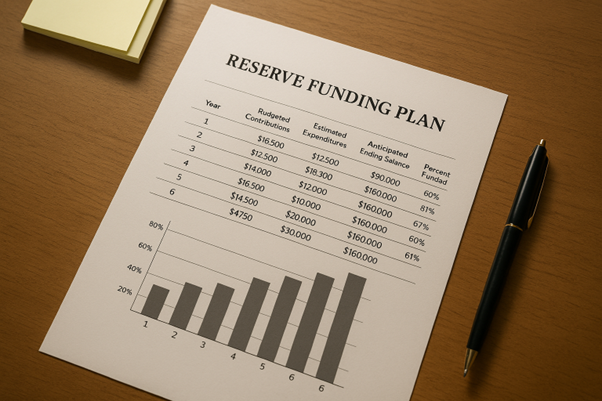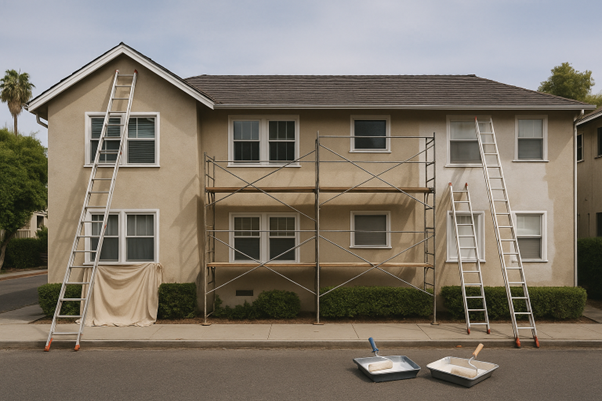

By: JMPC Team
Sep 26, 2025
Annual HOA Budgets & Reserves: A Simple LA Guide
Annual budget season doesn’t have to be a fire drill. In Los Angeles County, boards that follow a clear checklist—budget, disclosures, and reserve planning—protect property values and avoid surprise special assessments. Below you’ll find a simple framework that aligns with California’s Davis-Stirling requirements and practical steps you can act on this month. HOA Lawyer Blog
Estimated reading time: ~4-4 minutes.
Why annual reviews matter (and what can go wrong)
When boards postpone budget work or skip reserve updates, small issues (roofing, paint, pool equipment) become big, expensive projects. California requires an Annual Budget Report (ABR) delivered 30–90 days before fiscal year-end, which must be distributed in that window to all members. The ABR is not just a pro-forma budget—by statute it also includes: a reserve summary (Civ. Code §5565), a summary of the reserve funding plan (with notice that the full plan is available on request), a statement on any deferral of major components, any anticipated special assessment (amount, start date, and duration), the mechanism for funding reserves, the procedures used to calculate reserves (see §5570(b)(4)), outstanding loans (payee, rate, balance, annual payment, and payoff date), an insurance summary (carrier, type, limits, deductible), and the Assessment & Reserve Funding Disclosure Summary (Civ. Code §5570). HOA Lawyer Blog
The cost of delay (three quick examples)
- Cash crunch: Deferred roof work forces an unplanned special assessment.
- Insurance surprises: Coverage gaps or premium spikes hit after renewal because the ABR didn’t surface policy details early. HOA Lawyer Blog
- Lender friction: Inadequate reserves can complicate sales and refinances for your owners.

The LA Board’s 60-minute checklist
Use this at the start of budget season; repeat as you finalize numbers.
1) Calendar & compliance (10 min)
- Lock your ABR delivery window: 30–90 days before your fiscal year ends. In the same window, send the Annual Policy Statement (APS)—a consolidated packet of your association’s policies (Civ. Code §5310). HOA Lawyer Blog
- Plan an open meeting to adopt the budget and any reserve funding plan changes. HOA Lawyer Blog
2) Build the pro-forma (15 min)
- Draft an accrual-basis budget: utilities, landscape, janitorial, pool, management, admin, insurance, legal, contingency.
- Flag contracts likely to increase (water, waste, insurance).
- Model at least two dues scenarios: baseline vs. “catch-up” for reserves.
3) Reserves, the right way (15 min)
- Pull the latest reserve study (required every three years, with annual updates) and confirm major components, remaining life, and estimated replacement costs.
- Prepare the reserve summary and reserve funding plan summary for the ABR; include the statutory notice that the full plan is available upon request (and provide at no cost if an owner asks). HOA Lawyer Blog
4) Disclosures & attachments (10 min)
Your ABR should include at minimum: the pro-forma budget, reserve summary, reserve funding plan summary + notice, any deferral of major components (with justification), anticipated special assessments (amount, start, duration), reserve funding mechanism, reserve calculation procedures (per §5570(b)(4)), outstanding loans (payee, rate, balance, annual payment, payoff date), insurance summary (carrier, type, limits, deductible), y el Assessment & Reserve Funding Disclosure Summary (Civ. Code §5570). Delivery to members must be by individual delivery (first-class mail, certified, or electronic transmission if the member consented in writing). Associations may send a summary instead of the full packet, but the summary must include instructions—in at least 10-point boldface on the first page—on how to obtain the full report at no cost. HOA Lawyer Blog
5) Communicate clearly (10 min)
- Draft a plain-English owner cover letter: what changed, why, and how it protects long-term costs.
- Set Q&A office hours with management so board meetings stay focused.
Pro Tip: Run a “1-year + 5-year” view. Owners accept modest dues increases when they see how it prevents a $5K special assessment later.

Local nuances for LA County boards
- Insurance volatility: Many LA associations saw premium increases and coverage shifts. Budget early for potential jumps and verify deductible strategy with your broker; capture the required insurance summary details (carrier, type, limits, deductible) in the ABR. HOA Lawyer Blog
- Aging components: In mature LA neighborhoods, roofs, balconies, paving, and mechanicals often hit replacement windows simultaneously—your reserve plan should sequence them to avoid stacking assessments.
- Owner communications: Communities with multilingual owners benefit from a one-page summary in plain English plus links to translated FAQs.
- Open meeting adoption: Reserve funding plan changes must be adopted at an open meeting—note it on the agenda and minutes. HOA Lawyer Blog
Let’s make budget season boring—in a good way. Contact JPMC to set your ABR timeline and reserve targets, and to package disclosures owners actually read. Start a quick consult with JPMC.
Deck / TL;DR
What LA County boards should review each year to keep dues stable, projects on schedule, and reserves healthy—plain-English, informational only (not legal or tax advice).
- Deliver your Annual Budget Report 30–90 days before fiscal year-end; send the Annual Policy Statement in the same window. HOA Lawyer Blog
- ABR must include pro-forma budget, reserve summary (§5565), funding plan summary (with “available on request” notice), deferrals, anticipated special assessments (amount/start/duration), funding mechanism, reserve calc procedures, outstanding loans, insurance summary, and the 5570 disclosure. HOA Lawyer Blog
- Delivery must be by individual delivery (mail or email with prior written consent). If you send a summary, include bold 10-pt instructions on page one explaining how to get the full report at no cost. HOA Lawyer Blog
- Adopt budgets and funding plans in an open meeting and communicate changes plainly. HOA Lawyer Blog
- Small, predictable dues beats big special assessments later.
FAQs
Q: When exactly do we have to send the Annual Budget Report?
A: Between 30 and 90 days before fiscal year-end, to all members. Many LA HOAs target ~60 days to allow for mailing time. HOA Lawyer Blog
Q: What else must we send besides the ABR?
A: The Annual Policy Statement—it consolidates key policies such as contact designees, notice preferences, posting locations, assessment collection policy, disciplinary/fine policy, ADR/IDR summaries, architectural approval requirements, lien/enforcement rights, and the address for overnight assessment payments. HOA Lawyer Blog
Q: Can we email these disclosures?
A: Yes—individual delivery includes electronic transmission if the recipient consented in writing. Otherwise, use first-class or certified mail. HOA Lawyer Blog
Q: Can we send a summary instead of the full packet?
A: Yes, but the summary must include 10-point boldface instructions on the first page explaining how owners can obtain the full report at no cost. HOA Lawyer Blog
Q: What must the insurance summary contain?
A: For each policy: insurance company name (not agent), type of insurance, policy limit, and deductible. HOA Lawyer Blog
What to do next
- Book a 30-minute budget kickoff with JPMC to align calendar, reserve targets, and communications.
- Have us benchmark vendor contracts so line items match market reality.
- Schedule an owner info session (virtual or in-person) after the ABR goes out.
— External Sources —
[1] Are You Prepared for the New Annual Disclosures? — Tinnelly Law (ABR/APS contents; delivery, summary rules, and timing). HOA Lawyer Blog
[2] Civil Code §5300 / §5310 / §5565 / §5570 — as referenced via Tinnelly’s summary (ABR contents, APS contents, reserve summary, and disclosure form). HOA Lawyer Blog
